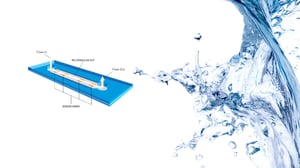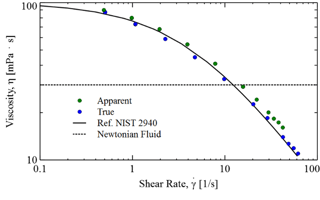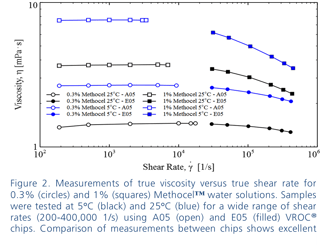Measuring viscosity dates back to as early as the 19th century. French physicist Jean Poiseuille discovered the concept of measuring viscosity by formulating the "mathematical expression for the flow rate for the laminar flow of fluids in circular tubes." Later on, this formulation was discovered by a German hydraulic engineer Gotthilf Hagen, which came to be known as the Hagen-Poiseuille equation (Britannica). Early measurements of viscosity focused primarily on the flow of blood. Measurements were conducted using the hemodynamometer that incorporated narrow tubes & glass capillaries in effort to measure the pressures in the arteries of horses and dogs (Sutera).
Pouiseuille's breakthrough paved the way for the development of modern medicine as measuring viscosity became an important aspect of varieties of industries -- including biopharma, inks, foods, and oils. Measuring viscosity started to incorporate different applications as concepts began to account for the changes in the samples dependent on the shear rate.
Some of the standard methods of measuring viscosity include:
- Capillary Viscometer: One of the oldest methods of measuring viscosity, the capillary viscometer measures the time between the volume of liquid/sample to pass through the length of the capillary tubes.
- Rotational Viscometer: Measures the torque required to revolve an object within the volume of liquid.
- Falling Sphere Viscometer: Measures the viscosity by dropping a sphere of a specific weight & density and measures the time it takes the sphere to reach designated junctures.
- Zahn Cup Method: Measures by observing the time it takes the volume of liquid to empty the cup though a small hole in the bottom of a container/cups
- Vibrational Viscometer: By measuring the vibrational waves using a vibrating rod submerged in fluid, viscosity is calculated by analyzing the dampening of the vibration.
- VROC Viscometer: This viscometer is pressure driven using a pumping system that the laminar flow to push the liquid into a rectangular slit with pressure sensors, measuring the viscosity of a fluid through the change in pressure after passing each pressure sensor within the microchip
VROC® technology promotes a different approach: a hybrid between microfluidic and micro-electro-mechanical-systems (MEMS) technologies. And because it is a microfluidic chip, users save a tremendous amount on samples.

What separates VROC technology and alternative viscometers?
- Sample Requirement: Microtechnology require just around 26 µl.
In an application using the microVISC™, we were able to to save half of the measurement time & sample when compared to capillary viscometers. Access application note here. - Shear Rates: From as low as .5 to as high as 1,400,000 s-1.
In most industries, it is imperative to use shear rates to model the application a particular industry works with. For instance, paint needs to gel when it is on a wall at low shear rates, but flow at shear rates from brushing – or ink needs to flow through a nozzle for printing at very high shear rates, but needs to stick and hold to the printing media at when at rest. Viscometers that are not able to capture that full shear range will not be effective for quality control, or design for those applications. (See application notes here) - Newtonian vs. Non-Newtonian: Equipped with full control of shear rates, you are able to see if your fluid is Newtonian or non-Newtonian.

In the figure above, the viscosity of a non-Newtonian standard decreases as shear rate increases. In the figure above, the NIST-standard's viscosity is not dependent to the increase in shear rate.
In the figure above, the NIST-standard's viscosity is not dependent to the increase in shear rate.
If you have any questions regarding VROC technology or curious to learn more, click below!
Articles cited:
"Jean-Louis-Marie Poiseuille, French Physician" written by The Editors of Encyclopedia Britannica. Access article here.
"The History of Poiseulle's Law" by Salvatore P. Sutera, Department of Mechanical Engineering, Washington University, St. Louis, Missouri. Access paper here.



